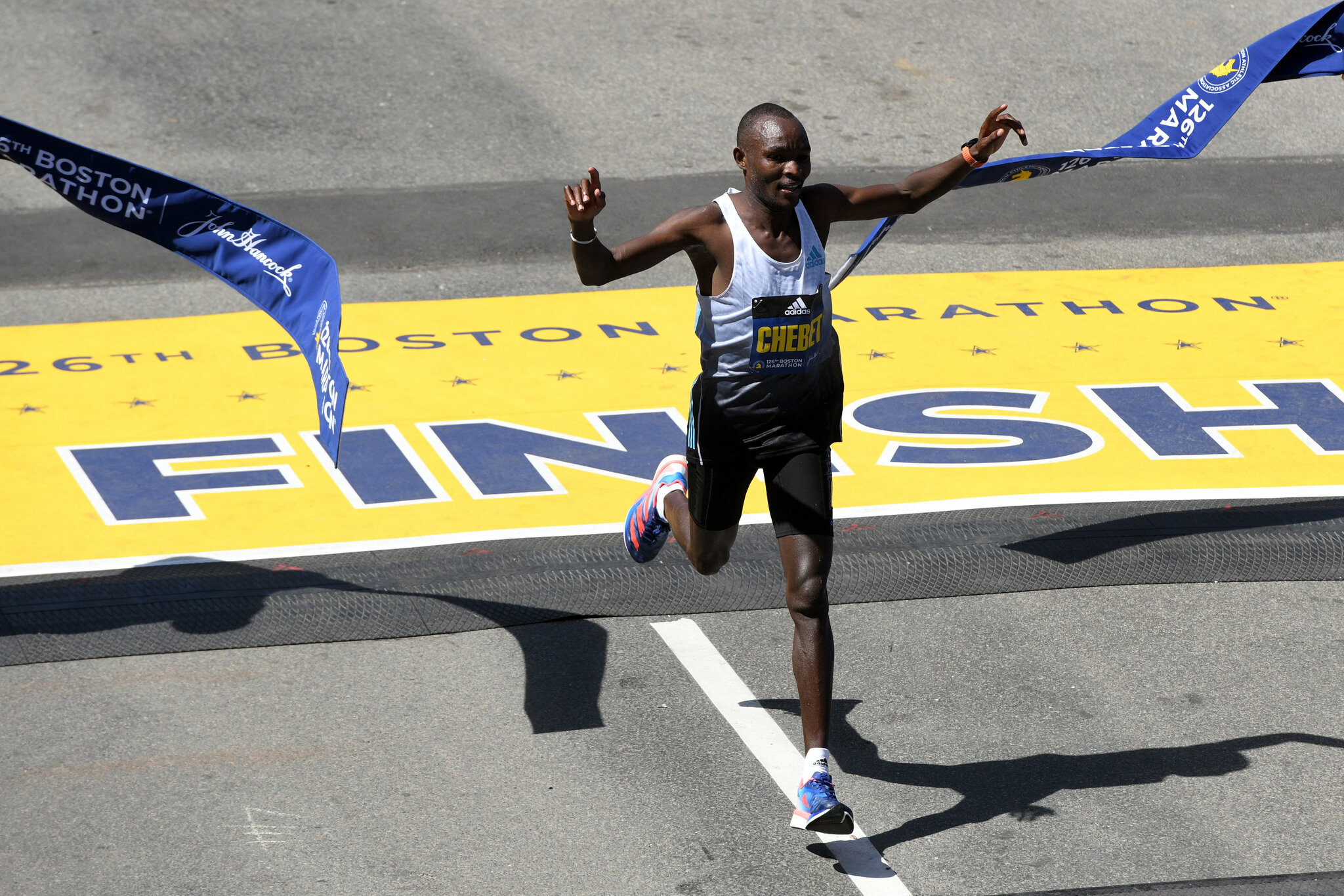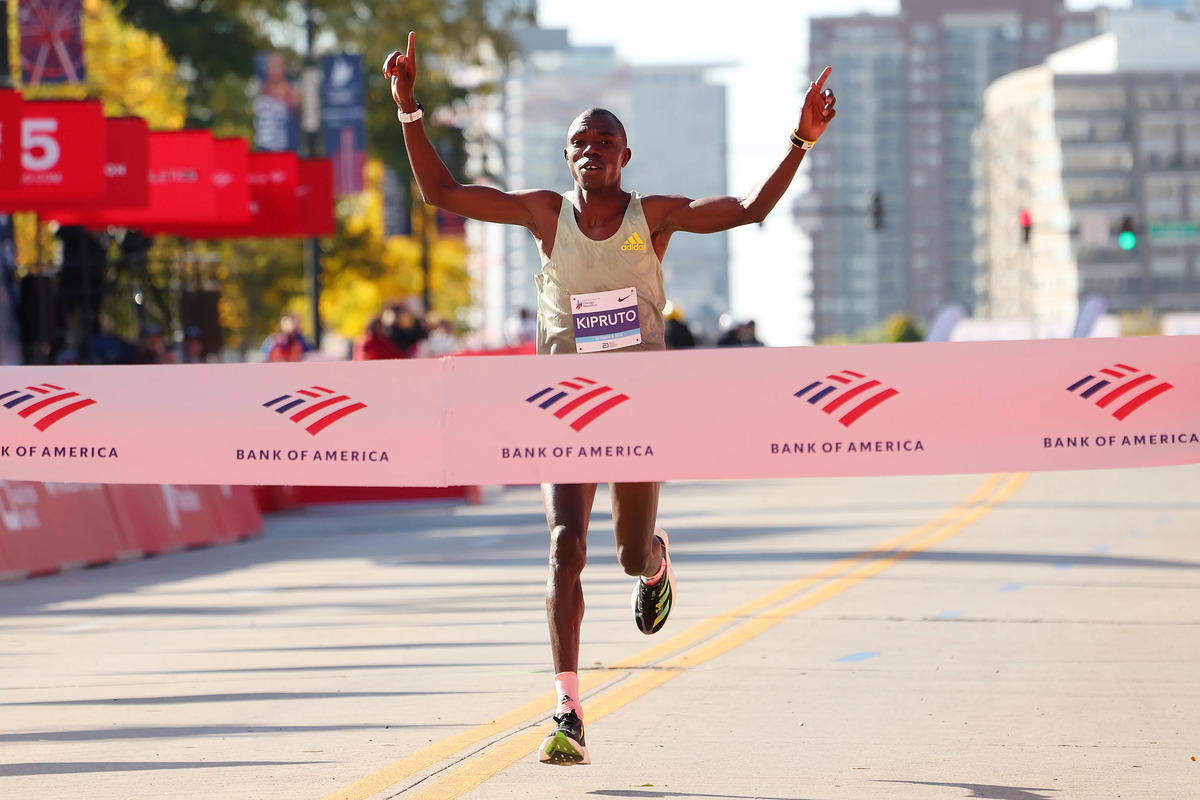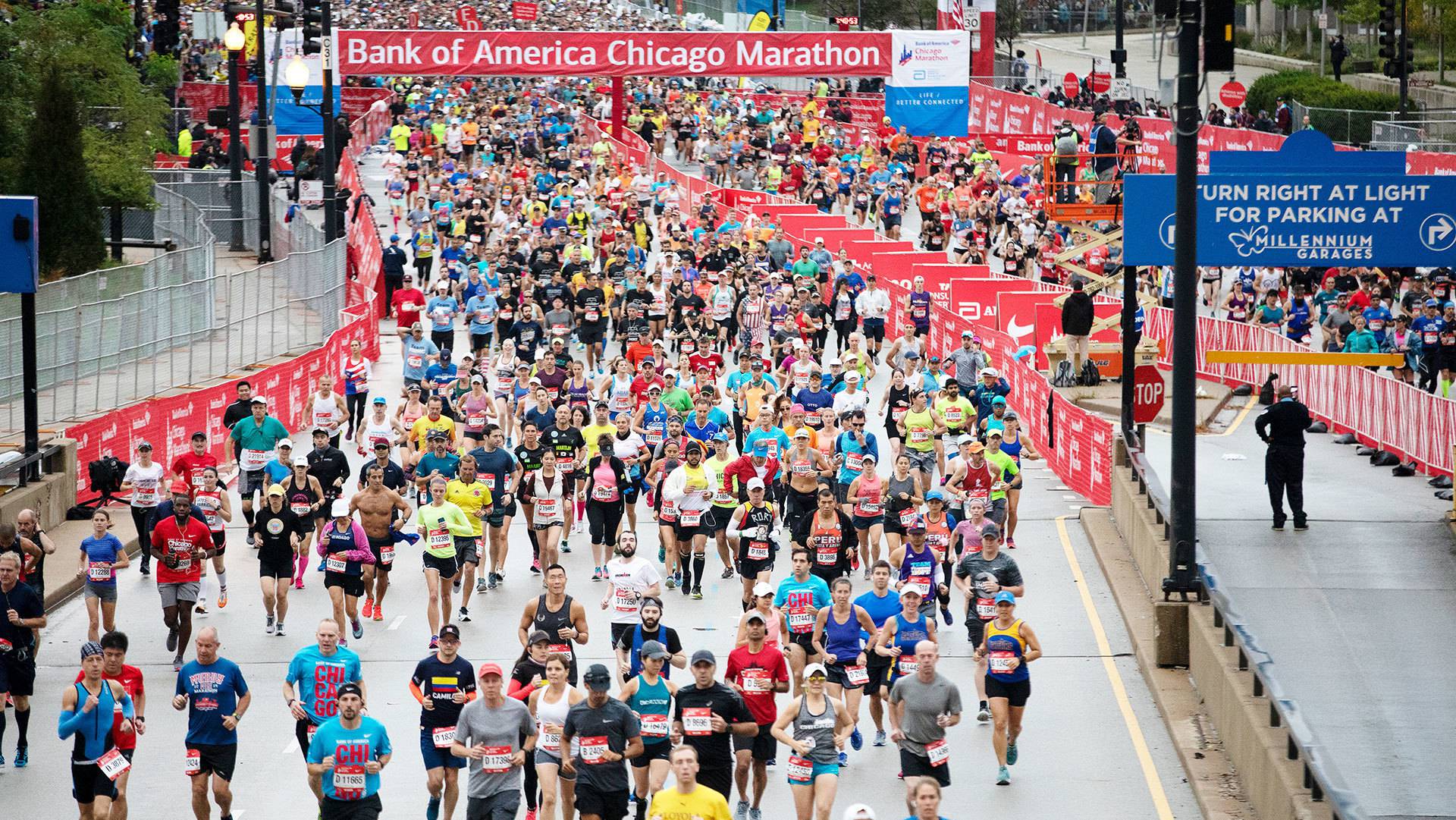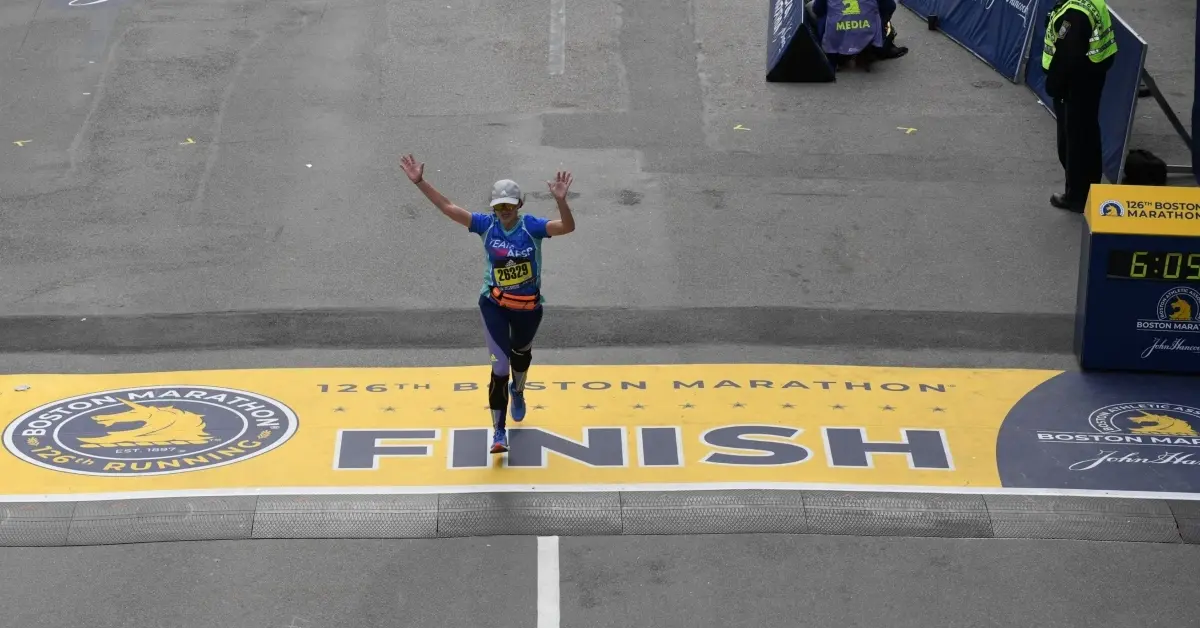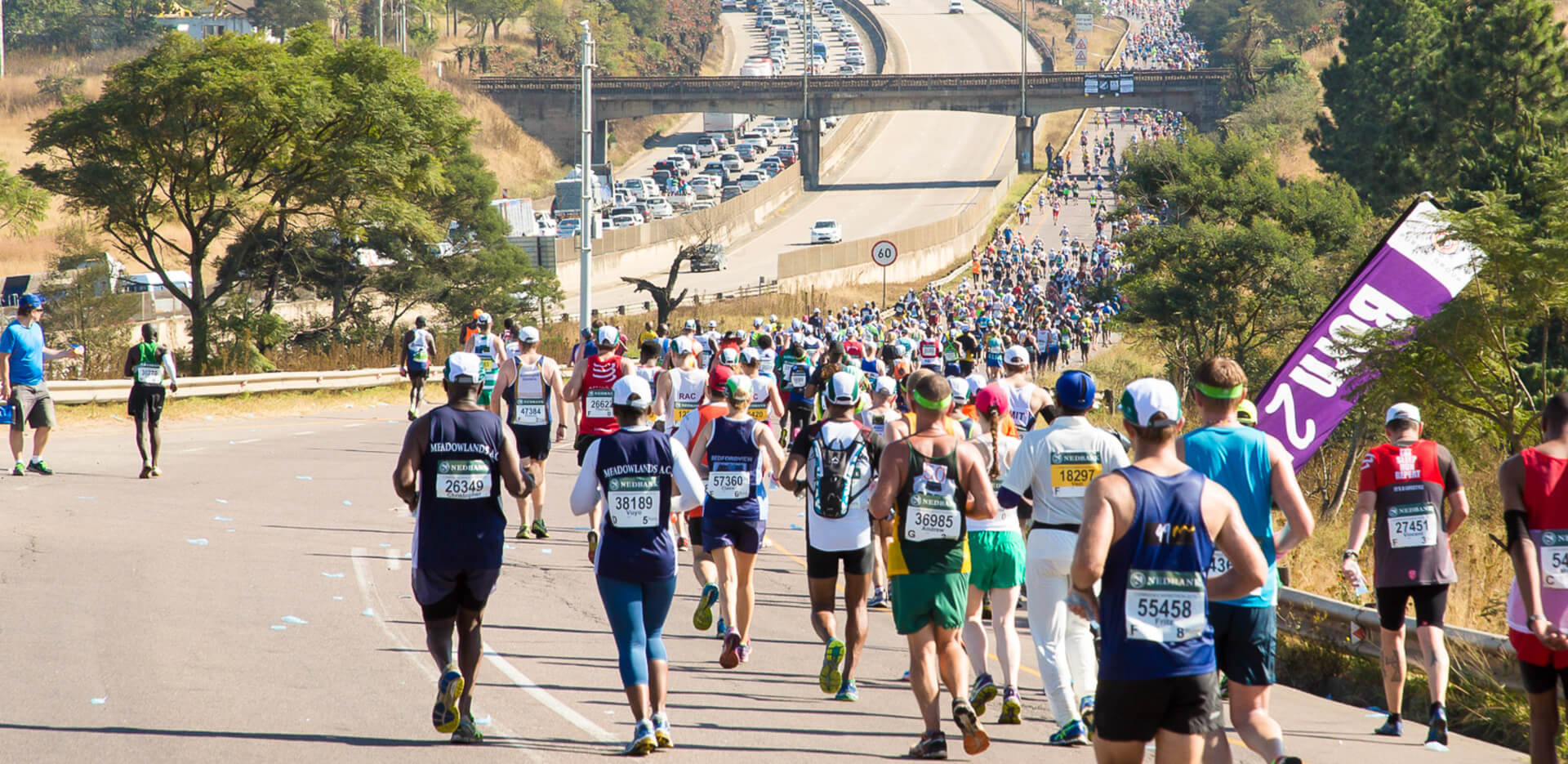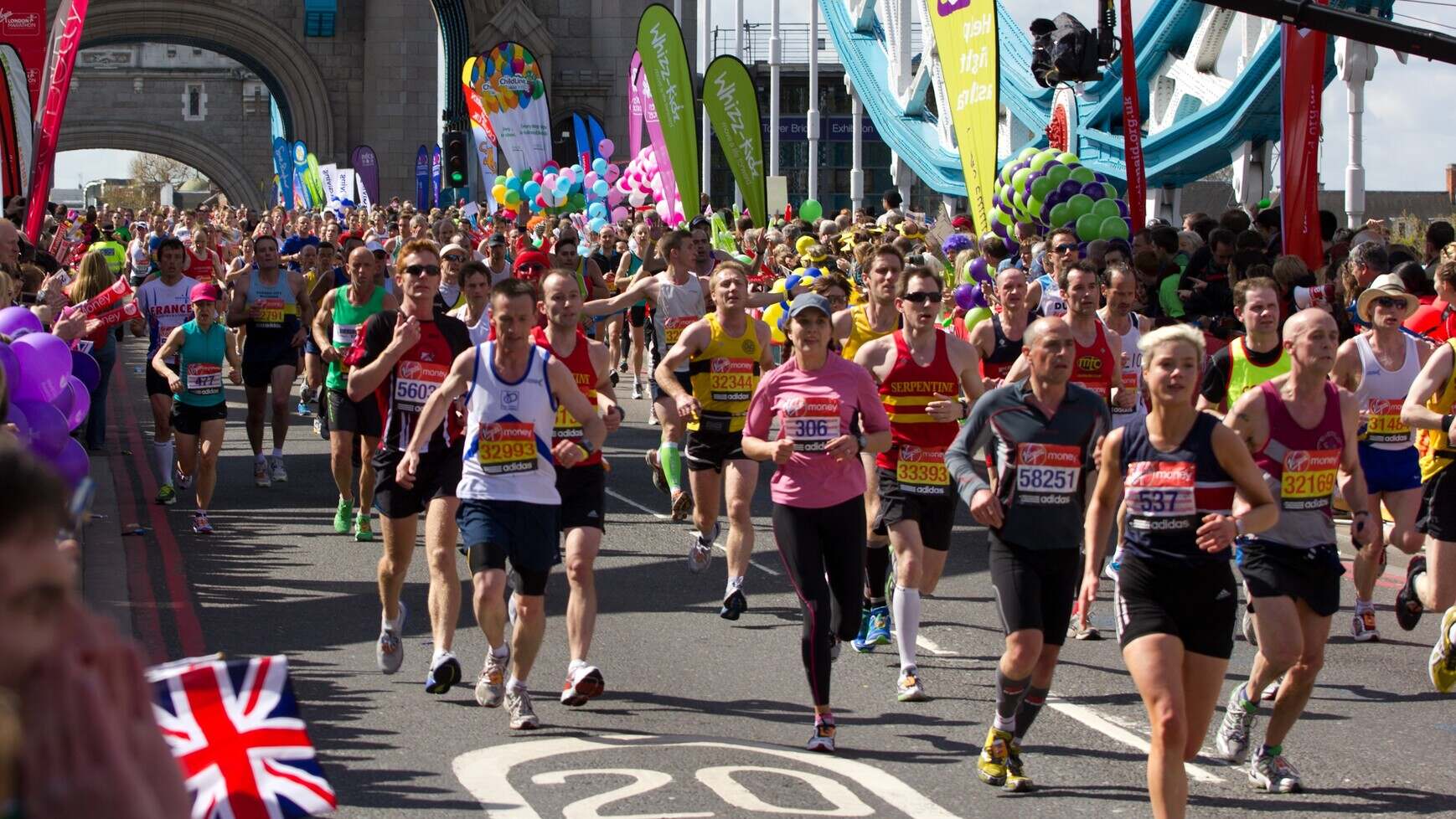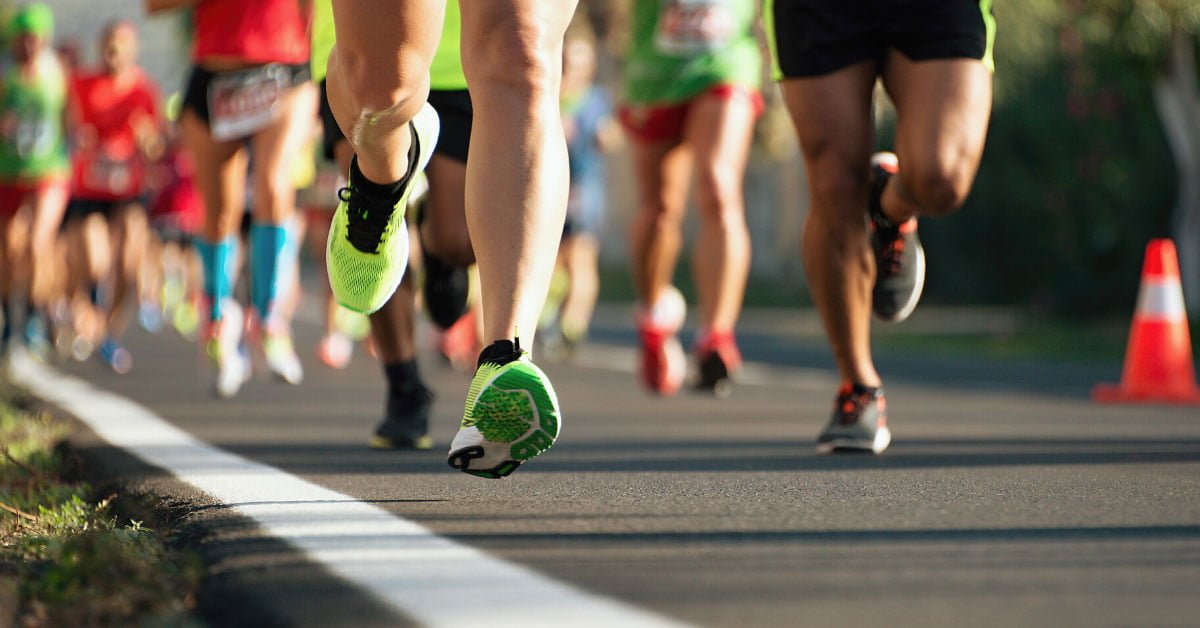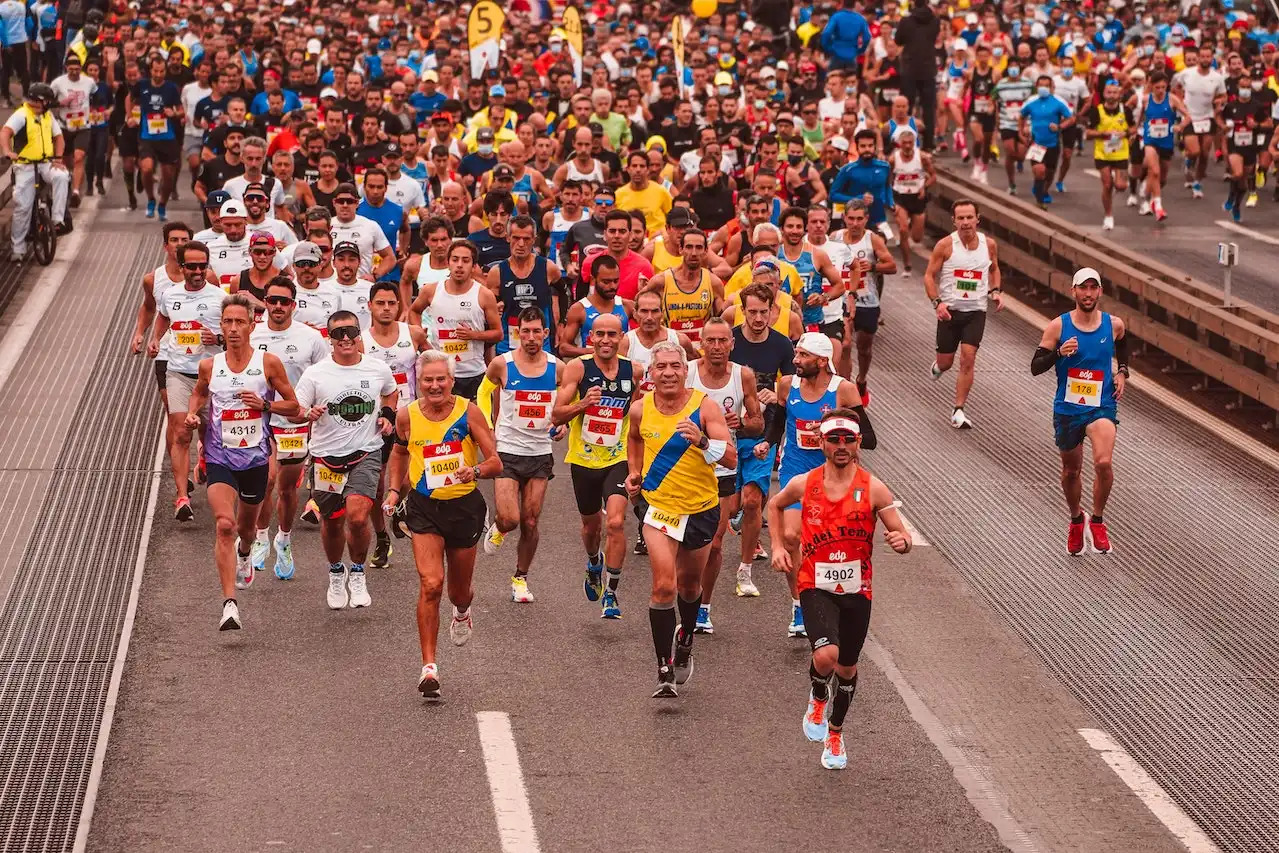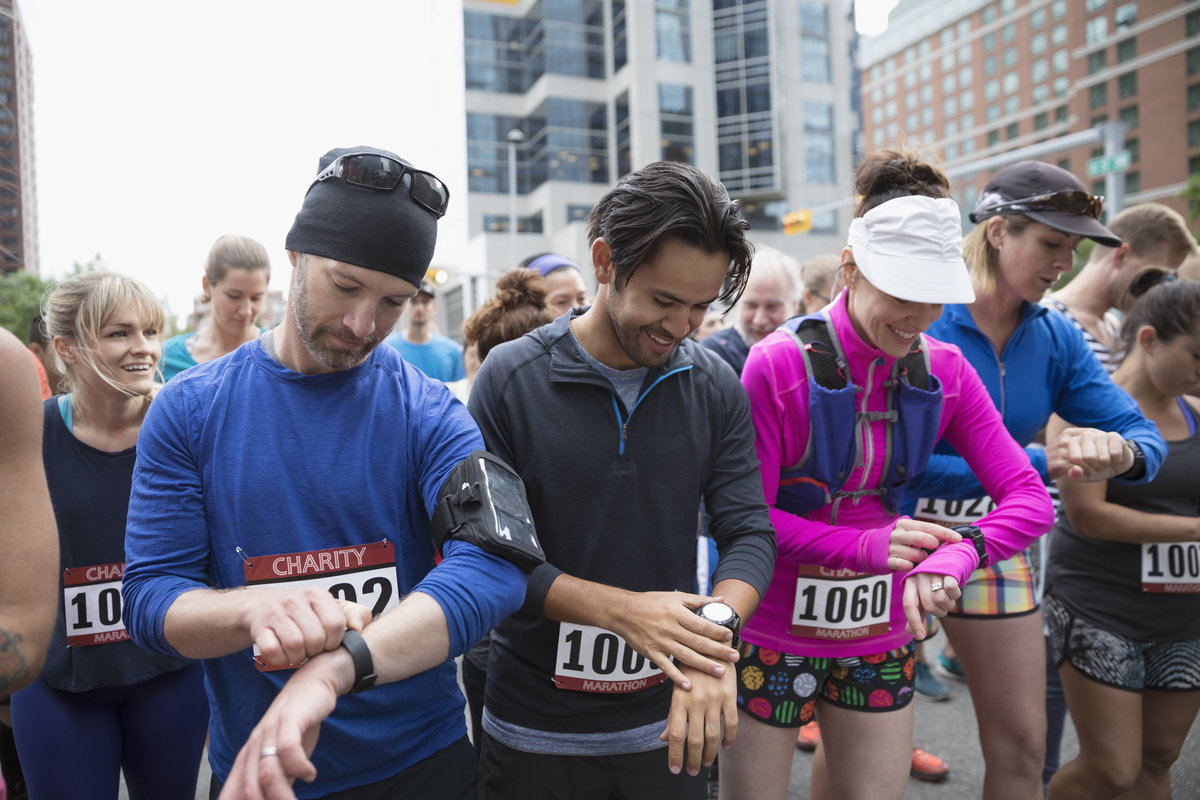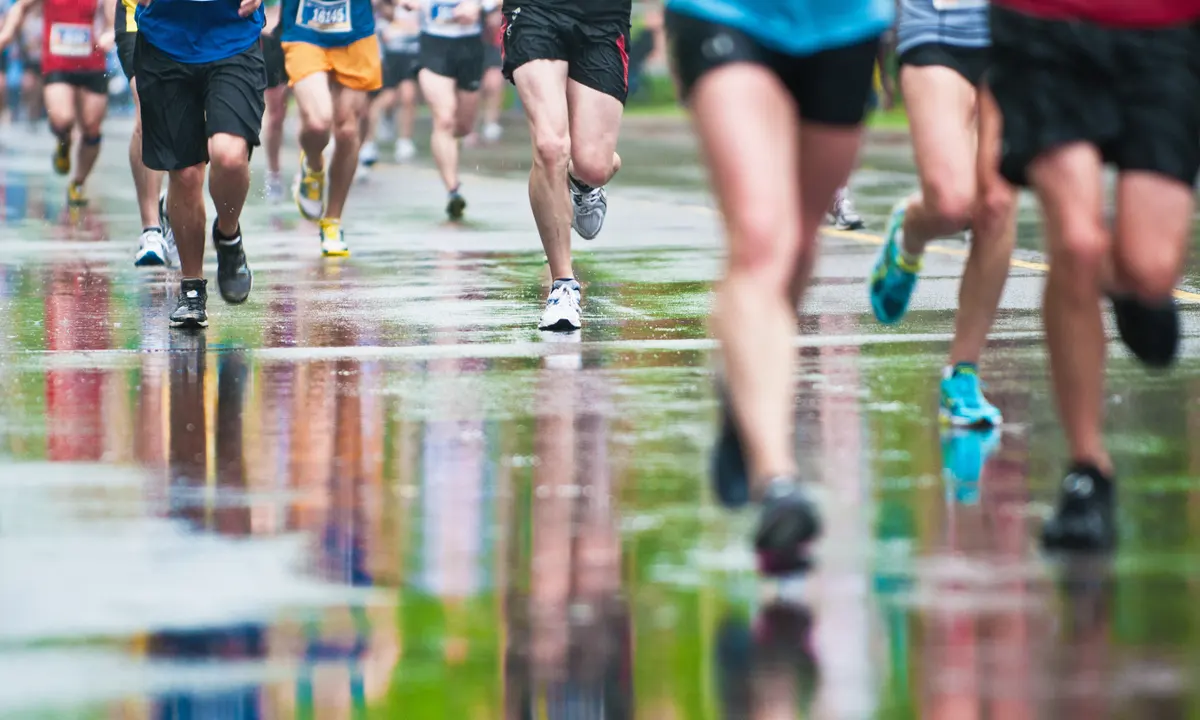Home>Misc>Featured>How Many Runners Are There At The Chicago Marathon
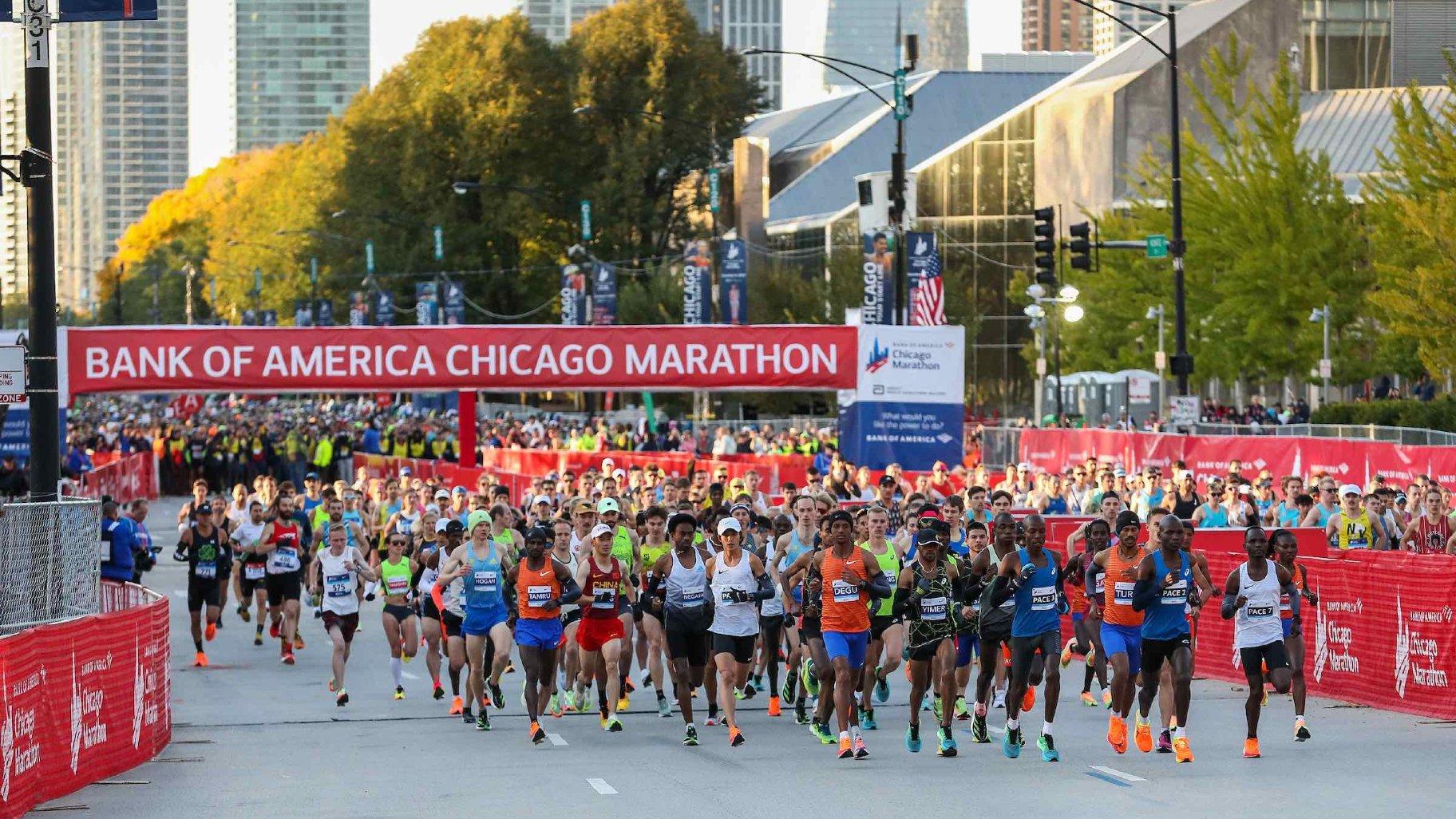

Featured
How Many Runners Are There At The Chicago Marathon
Modified: January 2, 2024
Learn all about the featured runners and their accomplishments in the iconic Chicago Marathon. Discover how many runners participated, their strategies, and incredible achievements.
Introduction
Welcome to the world of long-distance running and one of the most iconic marathon events in the world – the Chicago Marathon. This annual event, held in the vibrant city of Chicago, attracts thousands of runners from around the globe, all striving to conquer the 26.2-mile course.
Known for its flat and fast course, stunning cityscape, and vibrant atmosphere, the Chicago Marathon has become a must-do race for both seasoned runners and first-timers looking to test their endurance. Since its inception in 1977, the marathon has grown exponentially, cementing its place as one of the six World Marathon Majors.
The Chicago Marathon is not just a race; it’s an experience. As participants lace up their running shoes and prepare to hit the streets of the Windy City, they become part of a rich tradition that celebrates human achievement, determination, and the power of community.
Over the years, the Chicago Marathon has gained a reputation for its exceptional organization, enthusiastic crowd support, and top-notch race amenities. From the moment runners step foot at the starting line in Grant Park to the moment they cross the iconic finish line, every detail is carefully planned to ensure the best possible experience for all participants.
Whether you are a professional athlete, a dedicated endurance enthusiast, or a casual runner seeking a personal challenge, the Chicago Marathon offers something for everyone. It’s a chance to push your limits, embrace the incredible atmosphere, and join a diverse community of like-minded individuals who share a passion for running.
In the following sections, we will dive deeper into the rich history of the Chicago Marathon and explore the significant impact it has on both the running community and the local economy. We will also uncover the details of the marathon course, the elite runners who have graced its streets, and the unique experience of being a participant in this awe-inspiring event.
So, lace up your shoes, hold onto your excitement, and join us as we take a closer look at the remarkable world of the Chicago Marathon.
History of the Chicago Marathon
The Chicago Marathon traces its roots back to 1977 when a group of determined runners came together with the vision of organizing a premier marathon event in the city. The inaugural race, held on September 25th, 1977, saw 4,200 registered participants take on the challenging yet exhilarating course.
Since its humble beginnings, the Chicago Marathon has grown into one of the most prestigious marathons in the world. It has consistently attracted a high level of talent and has become a significant event on the global running calendar.
Over the years, the marathon has undergone various changes and improvements while maintaining its commitment to excellence. Notably, in 1982, the course was redesigned to provide a flatter and faster route, making it an ideal race for both recreational and elite runners.
One of the standout moments in the history of the Chicago Marathon occurred in 1984 when the event became the first major marathon to introduce prize money for professional runners. This move helped attract elite athletes from around the world, turning the race into a highly competitive event renowned for its stacked fields.
Another pivotal moment in the marathon’s history came in 1994 when the race organizers implemented a computerized timing system, allowing for more precise and accurate recording of participants’ times. This technological advancement further enhanced the event’s reputation and increased its appeal to runners seeking accurate timing data.
Throughout its history, the Chicago Marathon has also been associated with several remarkable records and achievements. In 2002, the marathon saw Paula Radcliffe of Great Britain set a new women’s world record, crossing the finish line in an astonishing time of 2 hours, 17 minutes, and 18 seconds.
The Chicago Marathon is also known for its inclusivity and commitment to charitable causes. The event has a long-standing partnership with various charity organizations, offering runners the opportunity to raise funds and support causes dear to their hearts while participating in the race.
Year after year, the Chicago Marathon continues to captivate the running community with its rich history, commitment to excellence, and unwavering dedication to providing an exceptional race experience. As we now delve further into the marathon’s growth in participation, we’ll explore how this iconic event has evolved into a world-class spectacle that attracts runners from all walks of life.
Growth in Participation
Since its inception, the Chicago Marathon has experienced a remarkable growth in participation, attracting runners from every corner of the globe. What started as a modest race with a few thousand participants has now evolved into one of the largest marathons in the world, with tens of thousands of runners taking part each year.
In the early years, the Chicago Marathon saw a gradual increase in the number of participants. It wasn’t until the 1990s that the race gained significant momentum and started to attract a surge of interest from both local and international runners. This was partly due to the marathon’s reputation for its fast and flat course, making it an appealing choice for runners aiming to achieve personal bests or qualify for other prestigious races.
As word spread about the exhilarating experience of running through the streets of Chicago, the demand for entries rose exponentially. The marathon became a sought-after event, often selling out months in advance. Today, securing a spot in the Chicago Marathon has become a race in itself, as registration slots are quickly filled within hours of opening.
One of the key factors that contributed to the Chicago Marathon’s growth in participation was its status as one of the World Marathon Majors. This elite designation, which includes six of the most prominent marathons globally, further elevated the stature of the event and attracted top-tier runners from all over the world. The combination of the fast course, world-class competition, and the opportunity to earn coveted World Marathon Majors points made the Chicago Marathon an attractive choice for elite athletes.
Additionally, the Chicago Marathon’s commitment to inclusivity and encouraging participation from all backgrounds played a significant role in its growth. The race organizers embraced the idea of a “race for all” and made efforts to accommodate diverse participants, including wheelchair racers, handcycle athletes, and visually impaired runners. This commitment fostered an environment of inclusiveness and allowed the marathon to welcome a wider range of participants.
The growing popularity of the Chicago Marathon also had a positive impact on the local community. The marathon became an opportunity for the city of Chicago to showcase its vibrant atmosphere, welcoming spirit, and world-class hospitality. It brought people from diverse backgrounds together, fostering a sense of camaraderie and cultural exchange.
As we explore the registration process in the next section, we will delve into the strategies employed by the race organizers to manage the overwhelming demand and ensure a fair and efficient registration experience for all interested participants.
Registration Process
The registration process for the Chicago Marathon has evolved over the years to accommodate the growing interest and demand for entries. Today, securing a spot in this highly sought-after event requires careful planning and a bit of luck.
The registration period typically opens several months before the marathon takes place, with a limited number of slots available. In recent years, the popularity of the Chicago Marathon has surged, resulting in a high demand for entries. As a result, the race organizers have introduced a lottery-based system to ensure fairness and give everyone an equal chance of participating.
Interested runners must first submit their registration information during the designated registration period. This includes personal details, running history, and payment information. Once the registration period closes, a lottery drawing is conducted where participants are randomly selected for entry into the marathon.
For those who were not selected in the lottery, there are still other options to secure a spot. The Chicago Marathon offers guaranteed entry through several avenues. One way is through qualifying times achieved at select races or by meeting certain time standards based on age and gender. Charity entry is another popular option, where runners commit to raising a specified amount of funds for a partner charity.
As the demand for entries continues to grow, the Chicago Marathon organizers have implemented measures to prevent scalping and ensure legitimate entry transfers. Participants are required to provide identification and verify their registration at the race Expo before receiving their race materials.
The Chicago Marathon registration process reflects the race’s commitment to providing a fair and inclusive opportunity for all interested runners. While it may be challenging to secure a spot, the anticipation and excitement surrounding the registration period add to the overall allure and prestige of the event.
In the next section, we will explore the thrilling course details of the Chicago Marathon, including the iconic landmarks, breathtaking cityscapes, and the overall experience of running through the streets of Chicago.
Course Details
The Chicago Marathon boasts a course renowned for its flat and fast nature, making it an ideal race for runners aiming to achieve personal bests or qualify for other elite events. With its stunning cityscape, iconic landmarks, and enthusiastic crowd support, the course offers a truly memorable and exhilarating experience.
The race begins in Grant Park, located in the heart of downtown Chicago. Runners embark on a loop course that takes them through 29 vibrant neighborhoods, providing a diverse and immersive tour of the city. The course showcases the rich architectural beauty of Chicago, passing by famous landmarks such as Willis Tower, Millennium Park, and the iconic “Bean” sculpture.
Participants will also have the opportunity to run alongside the magnificent Lake Michigan, with breathtaking views of the shimmering lake and the city skyline in the backdrop. The cool breeze and the serene atmosphere add to the overall charm of the course.
The race route is meticulously designed to ensure a smooth and enjoyable experience for all participants. Aid stations are strategically placed throughout the course, providing necessary hydration and nutrition for runners. Medical aid stations are also available to address any participant’s needs, ensuring the safety and well-being of all runners.
Crowd support is a highlight of the Chicago Marathon course. Spectators line the streets, cheering on the runners with unwavering enthusiasm and energy. Their cheers, high-fives, and motivational signs create an atmosphere of excitement and encouragement, pushing runners to keep going and giving them a much-needed boost of adrenaline.
As runners approach the final stretch of the race, they are met with the electrifying energy of the spectators at the downtown finish line on Columbus Drive. The cheers grow louder, motivating participants to dig deep and give their all as they sprint towards the iconic finish line arch.
The Chicago Marathon course is designed to provide not only an exceptional running experience but also a showcase of the city’s vibrant culture, architecture, and community spirit. Running through the streets of Chicago, surrounded by the sights and sounds of this lively city, leaves an indelible mark on every participant.
Now that we’ve explored the thrilling course details, let’s shift our focus to the elite runners who have graced the streets of Chicago and left their mark on the marathon’s history.
Elite Runners at the Chicago Marathon
The Chicago Marathon has attracted some of the world’s most talented and accomplished runners throughout its history. From record-breaking performances to fierce rivalries, the race has seen unforgettable moments and remarkable achievements by elite athletes.
Over the years, the Chicago Marathon has showcased both international stars and local heroes. Many world-class runners have chosen Chicago as the stage to test their limits and make their mark in the world of long-distance running.
Some of the most notable elite runners who have conquered the Chicago Marathon include names like Khalid Khannouchi, Paula Radcliffe, Dennis Kimetto, and Brigid Kosgei.
In 1999, Khalid Khannouchi shattered the men’s world record at the Chicago Marathon with a blistering time of 2 hours, 5 minutes, and 42 seconds. His record-setting performance solidified Chicago’s reputation as a course capable of producing fast times.
Paula Radcliffe, one of the greatest female marathoners of all time, left an indelible mark on the Chicago Marathon. In 2002, she set a new women’s world record, finishing the race in an astonishing time of 2 hours, 17 minutes, and 18 seconds.
Another iconic moment in the history of the Chicago Marathon came in 2013 when Dennis Kimetto became the first runner in history to complete the race in under 2 hours and 4 minutes. His stunning time of 2 hours, 3 minutes, and 45 seconds solidified the marathon’s status as a venue for world-class performances.
In more recent years, Brigid Kosgei made history at the 2019 Chicago Marathon by demolishing the women’s world record with a jaw-dropping time of 2 hours, 14 minutes, and 4 seconds. Kosgei’s achievement showcased the continued prominence of the Chicago Marathon on the international stage.
These are just a few examples of the exceptional athletes who have graced the Chicago Marathon. The race has witnessed numerous battles for the top spot, fierce competition, and incredible displays of athleticism.
As the Chicago Marathon continues to grow in popularity and attract world-class talent, the excitement surrounding the race’s elite field only intensifies. Spectators and fellow runners eagerly await each year’s lineup, eager to witness awe-inspiring performances and witness new records being set.
Now that we’ve explored the accomplishments of elite runners at the Chicago Marathon, let’s shift our focus to the incredible crowd support and overall experience that makes this race truly exceptional.
Crowd Support and Experience
One of the defining features of the Chicago Marathon is the incredible crowd support that runners experience throughout the race. From the starting line to the final stretch, the streets are lined with enthusiastic spectators who offer unwavering support and encouragement to every participant.
The Chicago Marathon has earned a reputation for its vibrant and boisterous atmosphere, with spectators cheering, clapping, and ringing cowbells to motivate the runners. The energy from the crowd is contagious, and it becomes a driving force that helps runners stay focused, push through fatigue, and keep moving forward.
Throughout the 26.2-mile course, neighborhood after neighborhood comes alive with cheering spectators. Local residents, friends, family members, and volunteers form human walls of support, creating an unforgettable experience for the runners. The streets are filled with music, motivational signs, and countless high-fives, offering a much-needed boost of energy and motivation.
The deafening cheers and chants provide runners with a sense of unity and camaraderie as they push towards personal goals. The encouragement from the crowd injects a surge of adrenaline, helping participants to overcome physical and mental barriers and push towards the finish line.
For many participants, the highlight of their Chicago Marathon experience is the famous “Bank of America Cheer Zone,” located along the course. This specially designated section is packed with enthusiastic supporters who unleash a wave of cheers and applause, creating an electric atmosphere that can rival any sporting event.
Aside from the vocal support, spectators along the course also offer various forms of sustenance. From handing out orange slices and water to offering words of encouragement, the generosity and warmth of the crowd further enhance the overall experience for runners.
Throughout the race, the community of Chicago comes together to make the marathon a celebration of human achievement and determination. The vibrant cityscape, iconic landmarks, and diverse neighborhoods add to the unique ambiance and create a memorable backdrop for the runners’ journey.
In addition to the crowd support, the Chicago Marathon prides itself on providing a well-organized and memorable experience for participants. The race features plentiful aid stations, medical support, and ample course marshals to ensure the safety and well-being of all runners.
As runners approach the downtown finish line on Columbus Drive, they are greeted by a spectacular sight. The crowds roar, and the cheers grow louder as participants complete their remarkable journey. Crossing the iconic finish line is a deeply emotional and satisfying moment, filled with a sense of accomplishment and triumph.
The crowd support and overall experience of the Chicago Marathon are unparalleled. It is an event where runners experience the power of human connection and witness firsthand the incredible spirit of the city of Chicago.
Now that we’ve explored the incredible atmosphere and support along the race course, let’s dive into the significance of the Chicago Marathon as a qualifying race for other prestigious events.
Chicago Marathon as a Qualifying Race
The Chicago Marathon holds a special place in the hearts of many runners seeking to qualify for other prestigious races. With its fast and flat course, the marathon has become known as an excellent opportunity for participants to achieve qualifying times and earn their spot in other high-profile events.
One of the most sought-after qualifications is for the Boston Marathon, one of the oldest and most prestigious marathons in the world. The Chicago Marathon’s reputation for producing fast times makes it a popular choice for runners aiming to meet the rigorous Boston Marathon qualifying standards.
Runners aiming to qualify for the Boston Marathon need to meet age and gender-specific qualifying time standards. The Chicago Marathon’s course, with its ideal conditions and excellent organization, has consistently provided a platform for runners to showcase their abilities and secure Boston qualifying times.
Aside from the Boston Marathon, the Chicago Marathon serves as a qualifying race for many international marathons and prestigious events. For example, it serves as a qualifying race for the Abbott World Marathon Majors, a series of six of the biggest marathons in the world.
The Chicago Marathon’s inclusion in the World Marathon Majors has not only increased its profile but also intensified the competition among elite runners seeking to earn points towards the series. This further enhances the marathon’s status as a race of significance on the global running stage.
For recreational runners, using the Chicago Marathon as a qualifying race provides a tangible goal to strive for. Many training programs and running clubs focus on preparing runners for the Chicago Marathon, using it as a stepping stone towards achieving their qualifying times for other races.
The experience of running the Chicago Marathon as a qualifying race offers an additional layer of motivation and excitement. Participants not only strive to conquer the challenges of the course but also aim to achieve the required standards to unlock new opportunities in their running journey.
The Chicago Marathon’s reputation as a qualifying race speaks to the race’s prestige and the caliber of runners it attracts. The allure of reaching qualifying times for esteemed races is a driving force behind many runners’ decision to take on the challenge of the Chicago Marathon.
With its fast course and excellent organization, the Chicago Marathon continues to provide a platform for runners to achieve their qualifying goals and unlock exciting opportunities in the world of marathons.
As we continue to explore the impact of the Chicago Marathon, let’s now turn our attention to the profound influence the event has on the local economy.
Impact on the Local Economy
The Chicago Marathon is not only a world-class sporting event but also a significant economic driver for the city of Chicago. Each year, the marathon injects a substantial amount of money into the local economy, benefiting various sectors and businesses.
One of the key areas that benefit from the marathon is the hospitality industry. Thousands of participants and their supporters travel to Chicago to participate in or spectate the race, leading to increased hotel bookings and a surge in demand for accommodations. Hotels, restaurants, and businesses in the hospitality sector experience a boost in revenue during the marathon weekend.
The local retail industry also sees a positive impact from the event. Visitors and residents alike often take the opportunity to explore the city, shop for souvenirs, and dine in local establishments. Retailers, especially those in the vicinity of the marathon route or close to event-related activities, benefit from increased foot traffic and sales during the marathon period.
Transportation services also play a vital role in supporting the marathon and reaping economic benefits. From taxi and rideshare services to public transportation, the increased demand for transportation options during the race weekend helps stimulate the local transport industry.
Furthermore, the Chicago Marathon provides employment opportunities for local residents. The event requires a significant workforce to manage various aspects, including race logistics, aid stations, security, and medical support. Local individuals are often hired as race volunteers, security personnel, and event staff, providing them with temporary employment and income.
The marathon’s impact is not limited to immediate economic benefits. It also serves as a platform to showcase the city of Chicago on the global stage. The event attracts media attention from around the world, shining a spotlight on the city’s vibrant culture, iconic landmarks, and welcoming community. This exposure helps promote tourism and encourages visitors to explore what Chicago has to offer beyond the marathon weekend.
The Chicago Marathon’s positive impact on the local economy extends beyond the race weekend itself. The event attracts runners and their supporters who often plan an extended stay to experience more of what the city has to offer. This leads to an increase in visitor numbers, with marathon participants and spectators exploring the city’s attractions, dining at local restaurants, and engaging in various cultural and recreational activities.
Overall, the Chicago Marathon serves as a catalyst for economic growth in the city. It stimulates various sectors, supports local businesses, generates employment opportunities, and showcases Chicago as a vibrant and welcoming destination.
As we wrap up our exploration of the impact of the Chicago Marathon, we can see how this world-class event not only brings the running community together but also provides significant economic benefits to the city and its residents.
Conclusion
The Chicago Marathon stands as a testament to the triumph of the human spirit, bringing together runners from all walks of life to embark on a journey of determination, perseverance, and personal achievement. This iconic marathon event has solidified its place among the world’s top marathons, captivating runners and spectators alike with its fast course, vibrant atmosphere, and unwavering crowd support.
From its humble beginnings to its current status as one of the World Marathon Majors, the Chicago Marathon has experienced remarkable growth in participation over the years. Runners from around the world flock to Chicago, drawn by the chance to challenge themselves on the renowned course and secure qualifying times for other prestigious races.
The support and enthusiasm of the crowd along the marathon route are unmatched, with spectators lining the streets, cheering, and offering support to every participant. The electric energy and memorable experiences created by the crowd contribute to the race’s allure and make it an unforgettable event for all involved.
The Chicago Marathon not only delivers a world-class running experience but also has a significant impact on the local economy. The marathon injects funds into the hospitality industry, retail sector, and transportation services, benefiting local businesses and providing employment opportunities for residents. The event showcases the vibrant spirit of the city, attracting visitors and promoting tourism beyond the race weekend.
As we reflect on the Chicago Marathon, it is evident that this race represents more than just a physical challenge. It symbolizes the power of community, the pursuit of excellence, and the celebration of human achievement. Whether participants are striving for a personal best, aiming to qualify for other races, or simply seeking an unforgettable experience, the Chicago Marathon offers a platform for them to realize their goals and create lasting memories.
As the sun rises over the city of Chicago on marathon day, thousands of runners prepare to take on the challenging yet exhilarating course. With each step, they become part of a rich tradition, joining the ranks of those who have come before them and embracing the collective passion for running.
The Chicago Marathon is more than just a race; it is an extraordinary journey that brings people together, celebrates human resilience, and inspires individuals to push their boundaries. Whether you are a runner, a spectator, or an admirer from afar, the Chicago Marathon invites you to be part of its vibrant tapestry, where dreams are pursued, milestones are achieved, and the indomitable human spirit shines brightly.
